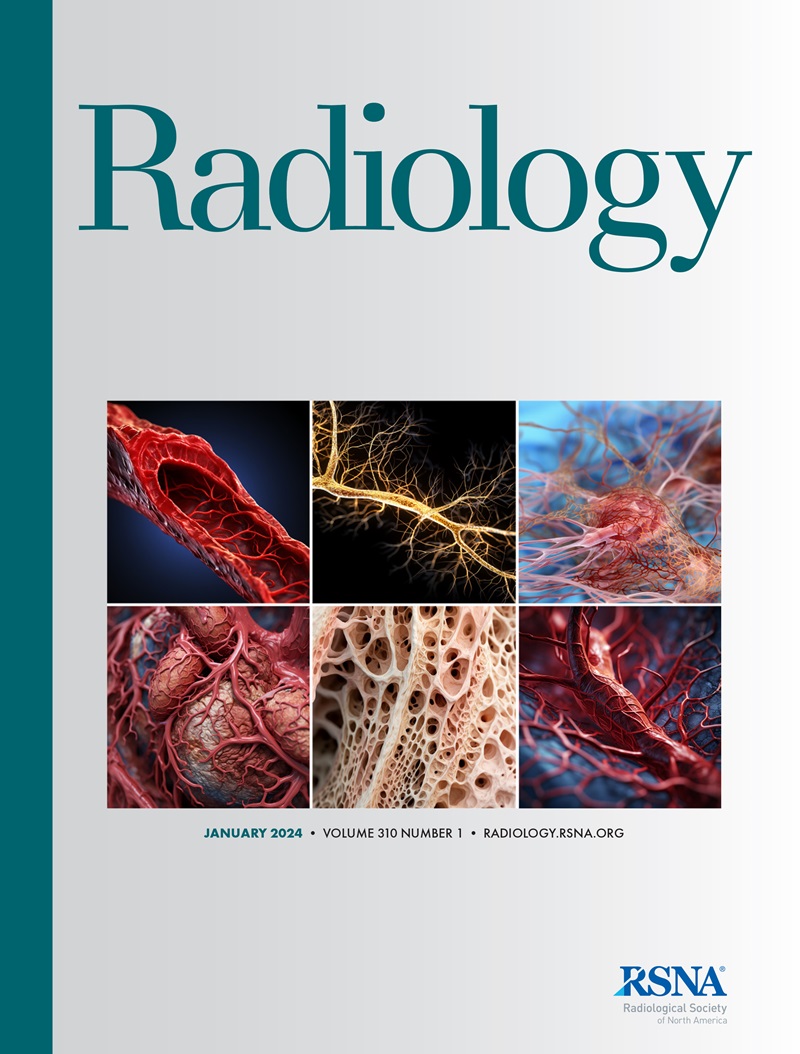依达柔比星与表柔比星经动脉化疗栓塞治疗巴塞罗那临床肝癌B期肝细胞癌:一项开放标签、随机、IV期试验
IF 12.1
1区 医学
Q1 RADIOLOGY, NUCLEAR MEDICINE & MEDICAL IMAGING
引用次数: 0
摘要
经动脉化疗栓塞(TACE)被认为是巴塞罗那临床肝癌(BCLC) B期肝细胞癌(HCC)患者的一线治疗方法。然而,在TACE中装载的最佳化疗药物仍然存在争议。目的比较依甲柔比星和表柔比星作为负载药物在BCLC B期HCC患者药物洗脱珠(DEB)-TACE中的疗效和安全性。在这项开放标签的IV期试验中,从2020年8月至2022年10月从四个中心招募BCLC B期HCC患者,并随机分配(按1:1的比例)接受依阿霉素DEB-TACE或表阿霉素DEB-TACE治疗。主要终点是无进展生存期(PFS),从随机化时间到进展或任何原因导致的死亡时间。疗效分析是在意向治疗的基础上进行的,只有接受治疗的参与者被纳入安全性分析。结果共有239名参与者(中位年龄57岁;IQR, 50-66岁;210名男性)被随机分为依甲柔比星组(n = 120)和表柔比星组(n = 119)。PFS的主要分析截止日期为2023年3月1日,共观察到167例(70%;依多柔比星组,85例;表柔比星组,82例事件)。依甲柔比星组和表柔比星组的中位PFS分别为10.8个月和8.7个月(风险比[HR], 0.61;95% ci: 0.44, 0.84;P = .002)。中位总生存期(OS)的HR为0.53 (95% CI: 0.31, 0.88),在12个月时OS率分别为81.5%和77.3%,在24个月时OS率分别为71.8%和54.0%。依甲柔比星组和表柔比星组的客观有效率分别为70.8%和57.1% (P = 0.03)。没有证据表明两组之间不良事件的发生率有差异,包括血液毒性。未观察到与治疗相关的死亡。结论依达柔比星DEB-TACE可提高BCLC B期HCC患者的生存率,但未增加任何不良事件的发生率。临床试验注册号:ChiCTR2000034758©RSNA, 2025本文有补充材料。本文章由计算机程序翻译,如有差异,请以英文原文为准。
Idarubicin versus Epirubicin in Transarterial Chemoembolization for Barcelona Clinic Liver Cancer Stage B Hepatocellular Carcinoma: An Open-label, Randomized, Phase IV Trial.
Background Transarterial chemoembolization (TACE) is regarded as the first-line treatment for patients with Barcelona Clinic Liver Cancer (BCLC) stage B hepatocellular carcinoma (HCC). However, the optimal chemotherapeutic agent loaded in TACE remains controversial. Purpose To compare the efficacy and safety of idarubicin and epirubicin as loaded drugs in drug-eluting bead (DEB)-TACE in patients with BCLC stage B HCC. Materials and Methods In this open-label, phase IV trial, patients with BCLC stage B HCC were recruited from four centers from August 2020 to October 2022 and randomly assigned (at a one-to-one ratio) to undergo idarubicin DEB-TACE or epirubicin DEB-TACE. The primary end point was progression-free survival (PFS), which was measured from the time of randomization to the time of progression or death from any cause. The efficacy analysis was conducted on an intention-to-treat basis, and only participants who received treatment were included in the safety analysis. Results A total of 239 participants (median age, 57 years; IQR, 50-66 years; 210 male) were randomly assigned to the idarubicin group (n = 120) or the epirubicin group (n = 119). The primary analysis cutoff for PFS was March 1, 2023, with 167 events observed (70%; idarubicin group, 85 events; epirubicin group, 82 events). The median PFS was 10.8 months and 8.7 months in the idarubicin and epirubicin groups, respectively (hazard ratio [HR], 0.61; 95% CI: 0.44, 0.84; P = .002). The HR for median overall survival (OS) was 0.53 (95% CI: 0.31, 0.88), with OS rates of 81.5% and 77.3% at 12 months and 71.8% and 54.0% at 24 months for the idarubicin and epirubicin groups, respectively. The objective response rates were 70.8% and 57.1% for the idarubicin and epirubicin groups, respectively (P = .03). There was no evidence of a between-group difference in incidence of adverse events, including hematologic toxicity. No treatment-related deaths were observed. Conclusion Idarubicin DEB-TACE increased survival in participants with BCLC stage B HCC, without an increase in the incidence of any adverse events. Clinical trial registration no. ChiCTR2000034758 © RSNA, 2025 Supplemental material is available for this article.
求助全文
通过发布文献求助,成功后即可免费获取论文全文。
去求助
来源期刊

Radiology
医学-核医学
CiteScore
35.20
自引率
3.00%
发文量
596
审稿时长
3.6 months
期刊介绍:
Published regularly since 1923 by the Radiological Society of North America (RSNA), Radiology has long been recognized as the authoritative reference for the most current, clinically relevant and highest quality research in the field of radiology. Each month the journal publishes approximately 240 pages of peer-reviewed original research, authoritative reviews, well-balanced commentary on significant articles, and expert opinion on new techniques and technologies.
Radiology publishes cutting edge and impactful imaging research articles in radiology and medical imaging in order to help improve human health.
 求助内容:
求助内容: 应助结果提醒方式:
应助结果提醒方式:


